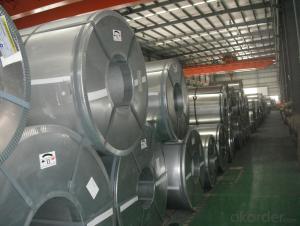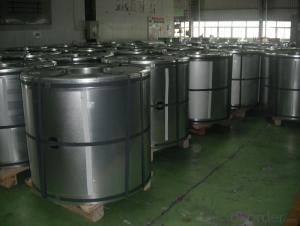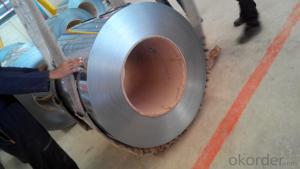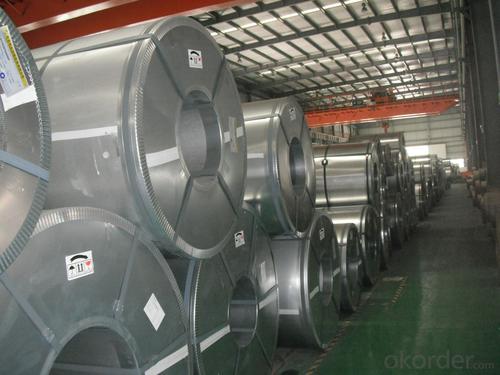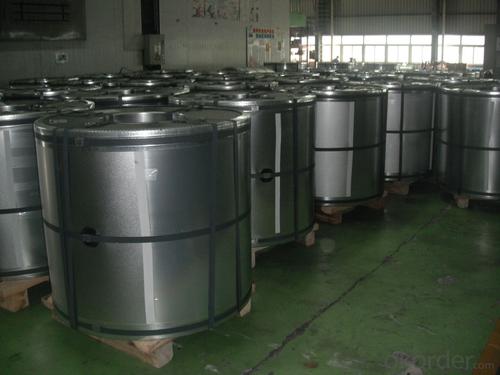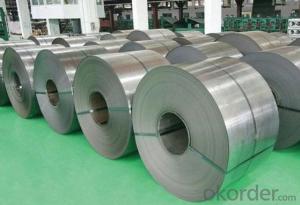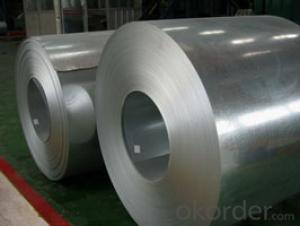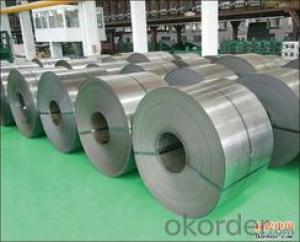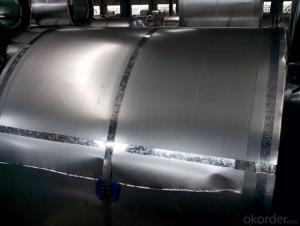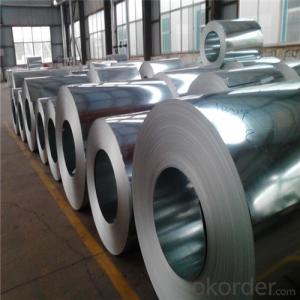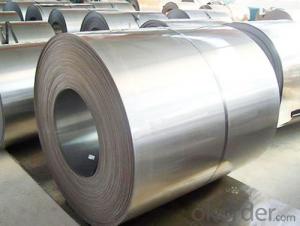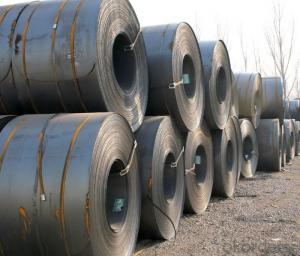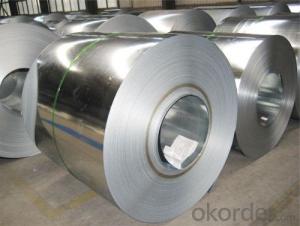Prime Quality Hot Dipped Galvalume Steel Sheet In Coils
- Loading Port:
- Shanghai
- Payment Terms:
- TT OR LC
- Min Order Qty:
- 100 m.t.
- Supply Capability:
- 20000 m.t./month
OKorder Service Pledge
OKorder Financial Service
You Might Also Like
1.Structure of Prime Quality Hot Dipped Galvalume Steel Sheet In Coils
Prime Quality Hot Dipped Galvalume Steel Sheet In Coils is one kinds of building material on construction.Steel sheet in melting zinc trough, the sticking of a layer of zinc sheet. At present mainly adopts continuous galvanizing process, namely the continuous roll of steel plate in the melt zinc plating tank made of galvanized steel sheet; Alloying of galvanized steel. This kind of steel plate is made by hot dip method, but after the slot, immediately heated to a temperature of about 500 ℃, it make the generation of zinc and iron alloy membrane. This kind of galvanized volumes with good coating of the sex and weldability.
2.Main Features of Prime Quality Hot Dipped Galvalume Steel Sheet In Coils.
1) Rust-proof
2) Water-proof
3)Durable using
3. Prime Quality Hot Dipped Galvalume Steel Sheet In Coils Images
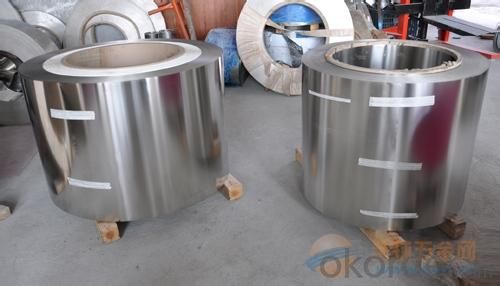
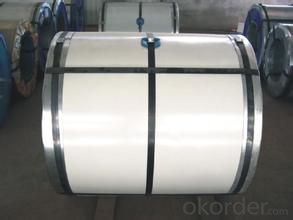
4. Prime Quality Hot Dipped Galvalume Steel Sheet In Coils Specification
1)Based raw material: Hot rolled steel coils or Cold rolled steel coils
2) Thickness
3) Width
4)Coating mass
5) Spangle
6)Surface treatment
7)Coil inner diameter
8)Painting kind
9)Painting color
10)Painting thickness
5.FAQ of Prime Quality Hot Dipped Galvalume Steel Sheet In Coils
We have organized several common questions for our clients,may help you sincerely:
①How about your company?
A world class manufacturer & supplier of castings forging in carbon steel and alloy steel,is one of the large-scale professional investment casting production bases in China,consisting of both casting foundry forging and machining factory. Annually more than 8000 tons Precision casting and forging parts are exported to markets in Europe,America and Japan. OEM casting and forging service available according to customer’s requirements.
②How to guarantee the quality of the products?
We have established the international advanced quality management system,every link from raw material to final product we have strict quality test;We resolutely put an end to unqualified products flowing into the market. At the same time, we will provide necessary follow-up service assurance.
③How to describe an inquiry? Could you give me an example?
Sure, for example:
1. Al-Zn coated steel
2. Standard of alumzinc steel : JIS G3302, the zincalume steel coilquality can
according to the europe standard.
3. The content of the material: DX51D +AZ
4. Surface treatment of the alumzinc steel: Chromated. Oiled, bright finish,
fingerprint resistance
5. Thickness of the alumzinc steel: 0.2mm-1.2mm
6. Width of the alumzinc steel: 800mm-1, 250mm
7. Coating weight: 150g
8. zincalume steel weight: As per customers' requests
9. zincalume steel ID: 508mm.
10. Applications: General use, construction industry, household appliance industry,
automobile industry and industrial instruments
Package: Fancy package or as per customers' requests
11. Place of production: China
Detailed Images
- Q: Can steel coils be coated with anti-static materials?
- Yes, steel coils can be coated with anti-static materials. Anti-static coatings are often used to reduce or eliminate static electricity buildup on surfaces, including steel coils. These coatings help to prevent the accumulation of dust, reduce the risk of electrical discharge and sparks, and ensure the safe handling and storage of steel coils in various industries.
- Q: how come when i put steel legs in lowest price in grand exchange no one buys them i got 101 steel legs in there and there at lowest price and they have been there for 3 days
- Steel legs are popular smithing items. Maybe a lot of persons are selling them at lowest price too so yours don't get sold. Plus, no one really buys steel legs.
- Q: full discription about hydrolics used in steel melting shop with hyd valve is use in thair circit too ?
- The correct spelling is hydraulics. I haven't heard the term steel melting shop you probably means a foundry or a steel mill The most obvious example i can think of is hydraulic-operated fork lifts. Hydraulic cylinders are used to lift the forks and to tilt them upwards or downwards. The valves are coneccted to levers next to the steering wheel. Hydraulic pressure is supplied by a hydraulic pump driven by a propane or diesel engine. In some forklift designs the wheels are also not connected directly to the engine, but driven by hydraulic motors. There are also a large variety of machines used in steel mills and metalworking companies to cut and shape metal parts. for example, press brakes, plate cutting shears, stamping presses, hole punch machines, drawing presses, etc. These types all operate in much the same basic way. They use a very large cylinder or group of cylinders to apply many tons of force to different kinds of metal working tools.
- Q: so i just bought a stainless steel bracelet.......and recently found out that stainless steel isnt actually stainless..........will turpentine ruin it
- real s/steel is nickel and chrome, however manufacturers of kitchenware, e.g s/teel cutlery use the cheaper version of nickel chrome and iron, that is why some s/steel products rust, so if you want to test any products carry asmall magnet and test the article
- Q: What is the maximum load capacity for steel coil storage racks?
- The maximum load capacity for steel coil storage racks can vary depending on the specific design and specifications of the rack. However, typically, steel coil storage racks can support loads ranging from a few thousand pounds to tens of thousands of pounds per level. It is important to refer to the manufacturer's guidelines and consult with structural engineers to determine the exact load capacity for a particular rack.
- Q: I am getting a barn soon and I was debating between wood, and steel. I think steel would look nicer [painted of course] and I was wondering which is cheaper. Any extra info would be great. Thanks x
- Steel okorder /
- Q: How are steel coils used in the manufacturing of wires?
- Steel coils are used in the manufacturing of wires by being fed into wire drawing machines, where they are gradually reduced in diameter through a series of dies. The steel coils serve as the initial raw material, providing the necessary strength and flexibility for the wires to be produced.
- Q: How do steel coils contribute to the construction machinery industry?
- Steel coils are essential components in the construction machinery industry as they are used for manufacturing various equipment such as cranes, excavators, bulldozers, and loaders. These coils serve as raw materials for fabricating structural parts, chassis, frames, and hydraulic systems, providing the necessary strength, durability, and stability required for heavy-duty construction machinery. Additionally, steel coils are used in the production of attachments like buckets, blades, and booms, enhancing the functionality and versatility of construction equipment. Overall, steel coils play a crucial role in advancing the construction machinery industry by ensuring the robustness and performance of the equipment.
- Q: I had a damascus steel katana made for me and was wondering if I could put gun blue on it to make the steel black and it still work right
- There okorder , the true Damascus is a region of spain, which is similar to getting swords made in Pakistan
- Q: so why shouldn't one use a steel cased 223 in an ar15?
- Because some people ***** and moan about how the lacquer or polymer gums up the chamber causing torn case rims. But they don't clean there guns anyway so there point is irrelevant. Some say it wears out your extractor faster which is also bullshit. The steel casings are a milder bi-metal. Really its people complaining for the sake of complaining.
Send your message to us
Prime Quality Hot Dipped Galvalume Steel Sheet In Coils
- Loading Port:
- Shanghai
- Payment Terms:
- TT OR LC
- Min Order Qty:
- 100 m.t.
- Supply Capability:
- 20000 m.t./month
OKorder Service Pledge
OKorder Financial Service
Similar products
Hot products
Hot Searches
Related keywords
